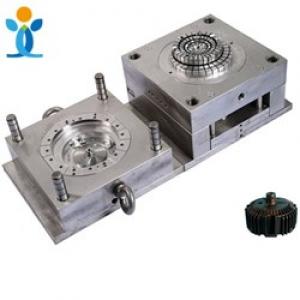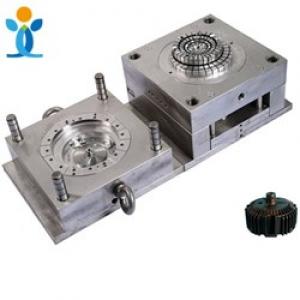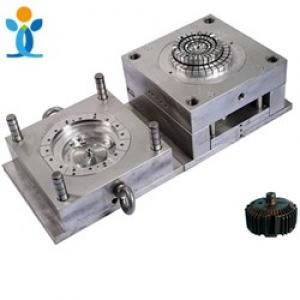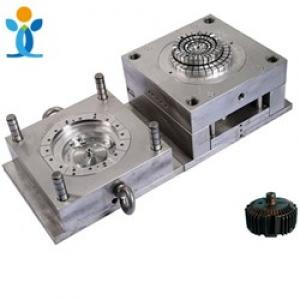Analysis of surface defects of injection molding products
Analysis of surface defects of injection molding products
The visible defects on the surface of injection molding products include dark spots, gloss differences or atomization areas, as well as surface wrinkling or orange peel. Usually these defects occur near the gate or behind sharp corners away from the gate area.
The causes of these defects can be found out from two aspects of mold and forming process.Dark spots appear near the gate, like a faint halo. In the production of high viscosity, low flow material products, such as PC, PMMA or ABS is particularly obvious. This kind of visible defect may appear on the surface of the product when the cooled surface layer resin is carried away by the resin flowing in the center. It is generally believed that this kind of defect occurs frequently in the stage of mold filling and pressure maintaining. In fact, dark spots appear near the gate, usually at the beginning of the injection cycle. The results show that the surface slip is actually attributed to the injection velocity, or rather the flow velocity at the front of the melt flow.
Even when the injection speed of the melt into the mold is constant, its flow speed will change. When entering the gate area of the mold, the melt velocity is very high, but after entering the cavity, the melt velocity begins to decrease. This change of flow velocity at the front of melt flow will lead to surface defects of products.
One way to solve this problem is to reduce the injection speed. In order to reduce the velocity of the melt flow front end at the gate, the injection can be divided into several steps, and the injection velocity can be increased gradually. The purpose is to obtain uniform melt velocity in the whole filling stage.
Low melt temperature is another reason for dark spots. Increasing barrel temperature and screw back pressure can reduce the probability of this phenomenon. In addition, the mold temperature is too low will produce surface defects, so increasing the mold temperature is another feasible way to overcome the surface defects of products.
Mold design defects can also produce dark spots near the gate. The sharp corner of the gate can be avoided by changing the radius. Pay attention to the location and diameter of the gate in the design to see if the design of the gate is appropriate.
Dark spots not only occur at the gate, but also often occur after sharp corners of the product are formed. For example, the sharp corner surface of the product is generally very smooth, but it is very dark and rough behind it. This is also due to the high flow rate and injection speed, which causes the cooling surface layer to slide instead of internal fluid.
Once again, it is recommended to use step-by-step injection and gradually increase the injection speed. The best way to do this is to allow the melt to start to increase in velocity only after it has passed through the sharp edge.
For injection molding products, in the textured product surface, its luster difference is the most obvious. Even if the surface of the mold is very uniform, irregular luster may appear on the product. In other words, the mold surface effect of some parts of the product is not well reproduced.
As the distance from the gate increases, the injection pressure decreases. If the far end of the gate of the product cannot be filled, the pressure is the lowest, so that the texture of the mold surface cannot be copied to the product surface correctly. Therefore, the area with the highest cavity pressure (half of the flow path from the gate) is the area with the least gloss difference.
To change this situation, the melt and mold temperature or pressure can be increased, and the increase of holding time can also reduce the difference in gloss.
The good design of products can also reduce the probability of gloss difference. For example, the drastic change of the wall thickness of the product can cause the irregular flow of the melt, which makes the surface texture of the mold difficult to be copied to the product surface. Therefore, the design of uniform wall thickness can reduce the occurrence of this situation, while too large wall thickness or too large rib will increase the probability of gloss difference.
In addition, the insufficient exhaust of melt is also a cause of this defect. "Orange peel" or surface wrinkling defects generally occur at the end of the channel when using high viscosity materials to form thick wall products. During the injection process, if the melt flow rate is too low, the surface of the product will solidify rapidly.
With the increase of flow resistance, the flow in front of the melt will become uneven, so that the outer solidified material can not fully contact the cavity wall, resulting in wrinkles. After curing and pressure maintaining, these wrinkles will become irreducible defects. For this defect, the solution is to increase melt temperature and injection speed.




